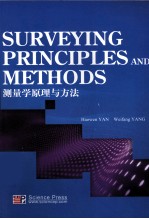
- 作 者:闫浩文编著
- 出 版 社:北京:科学出版社
- 出版年份:2009
- ISBN:9787030248763
- 标注页数:318 页
- PDF页数:326 页
请阅读订购服务说明与试读!
订购服务说明
1、本站所有的书默认都是PDF格式,该格式图书只能阅读和打印,不能再次编辑。
2、除分上下册或者多册的情况下,一般PDF页数一定要大于标注页数才建议下单购买。【本资源326 ≥318页】
图书下载及付费说明
1、所有的电子图书为PDF格式,支持电脑、手机、平板等各类电子设备阅读;可以任意拷贝文件到不同的阅读设备里进行阅读。
2、电子图书在提交订单后一般半小时内处理完成,最晚48小时内处理完成。(非工作日购买会延迟)
3、所有的电子图书都是原书直接扫描方式制作而成。
Part 1 Conventional Surveying 3
Chapter 1 Introductory 3
1.1 Basic concepts of surveying 3
1.2 Basic principles in surveying 7
1.3 Survey references 7
1.4 Methods used in point locations 9
1.5 History of surveying 10
1.6 Exercises 14
Chapter 2 Leveling 15
2.1 Definition and principles of leveling 15
2.2 Elements of the surveyors'level 19
2.3 Types of instruments used in leveling 25
2.4 Methods of leveling 38
2.5 Accuracy in leveling 50
2.6 Mistakes in leveling 51
2.7 Suggestions for instrument and rod work 52
2.8 Exercises 53
Chapter 3 Angles and Directions—Theories 57
3.1 Reference directions for vertical angles 57
3.2 Horizontal angles 58
3.3 Three north directions 59
3.4 Azimuths and bearing 60
3.5 Exercises 66
Chapter 4 Instruments for Angles and Directions Surveying 69
4.1 Theodolites and transits 69
4.2 Magnetic azimuth(bearing)surveying:magnetic compass 98
4.3 True azimuth(bearing)surveying 100
4.4 Exercises 111
Chapter 5 Distance Measurement 114
5.1 Methods for distance determination 114
5.2 Taping 116
5.3 Electromagnetic distance measurement 123
5.4 Summary of distance measurement methods 137
5.5 Exercises 138
Chapter 6 Traverse Surveying 140
6.1 An introductory to traverses 140
6.2 Field work in traverse surveying 141
6.3 Office work in traverse surveying 145
6.4 Exercises 157
Chapter 7 Error Theories 159
7.1 Introduction 159
7.2 Relevant definitions 162
7.3 Law of errors propagation 165
7.4 The method of least square and its application 168
7.5 Calculation of standard deviation by true errors 177
7.6 Several examples using the law of errors propagation 180
7.7 Exercises 182
Chapter 8 Topographic Maps 185
8.1 Concepts of map and topographic map 185
8.2 Map scales and scale precisions 186
8.3 Map grids 187
8.4 Gauss-Krüger projection 188
8.5 Subdivisions and numbering of topographic maps 192
8.6 Map symbols 195
8.7 Application of topographic maps 201
8.8 Exercises 220
Chapter 9 Topographic Surveying 223
9.1 Background 223
9.2 Topographic control framework 223
9.3 Methods for detail surveys 225
9.4 Procedures of conventional topographic surveys 231
9.5 Digital mapping techniques 235
9.6 Exercises 237
Part 2 Modern Surveying 241
Chapter 10 Global Positioning Systems 241
10.1 Introduction 241
10.2 GPS configurations 242
10.3 Work principles of GPS 245
10.4 Geodetic aspects of GPS 252
10.5 GPS in practical surveys 256
10.6 Exercises 263
Chapter 11 Geographic Information Systems 265
11.1 General background of GIS 265
11.2 Activities and components of a GIS 268
11.3 Data collections of GIS 269
11.4 Data analysis 274
11.5 Practical applications of GIS 284
11.6 Some important concepts in GIS 285
11.7 Exercises 287
Chapter 12 Photogrammetry 288
12.1 An introductory background 288
12.2 Aerial photogrammetry 289
12.3 Terrestrial photography 301
12.4 Stereo-photography 304
12.5 Close-range photography 307
12.6 Applications of photography 307
12.7 Exercises 313
Referenced Bibliographies 314
Referenced Internet Resources 315
Appendix:Math Foundation 317
